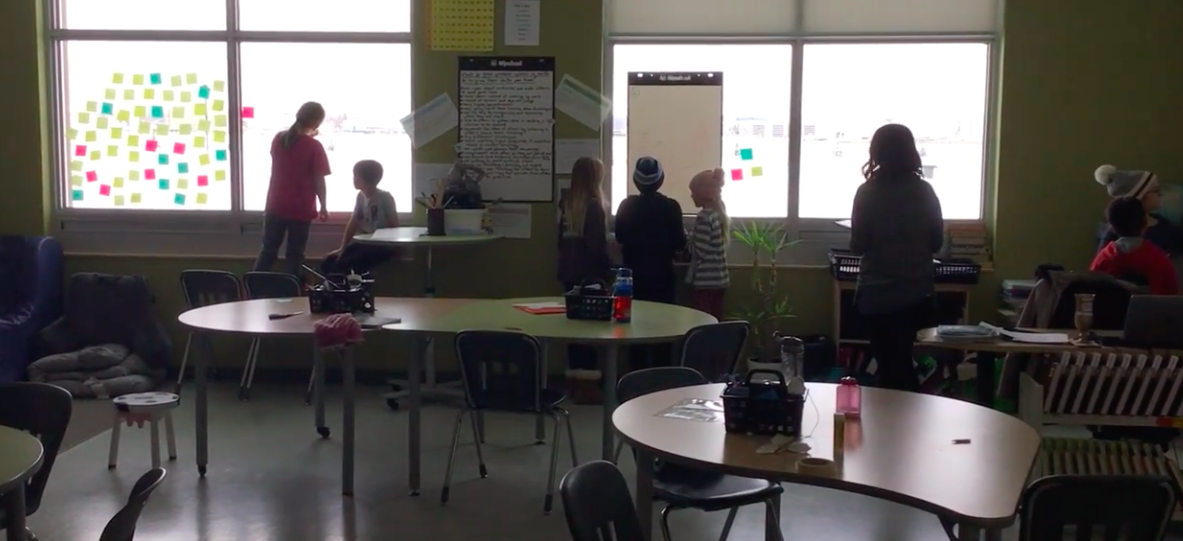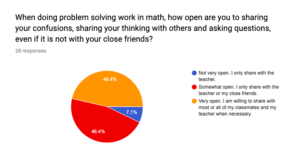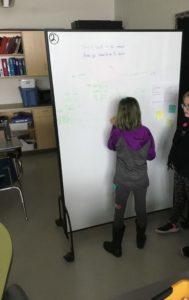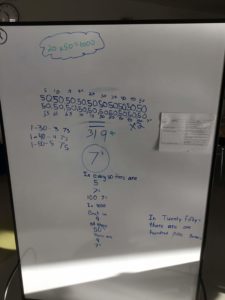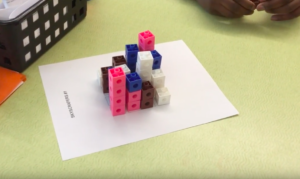The Gist
You cannot travel very far through a neighbourhood’s hallway at Clearspring Middle School before you see yet again another class up on their feet using vertical non-permanent surfaces to think through an engaging math problem in groups of 2 or 3. Teachers are embracing the research-based philosophy of Dr. Peter Liljedahl, a professor whose work has gained international attention over the last decade. Dr.Liljedahl has identified “14 variables and corresponding optimal pedagogies that offer a prescriptive framework for teachers to build a thinking classroom”. (www.edutopia.org/article/building-thinking-classroom-math, 2017)
I’ve had the opportunity to take up a 4-5 day residency in a few math classrooms at CMS to begin building a thinking classroom. The teacher and I pick highly engaging, non-curricular tasks. We execute them together, honouring visibly random groups of 3 (students pick a card from a deck to group themselves) and displaying thinking on VNPS (vertical non-permanent surfaces, such as Wipebooks, whiteboards or windows).
Good Stuff
- In only a handful of days, many students began feeling the benefit of this way of being in math class. One survey, taken in a grade 5 class before a residency began and then again after 5 days, produced telling results:
- We could begin to bring together our thoughts on how learning in math class fits with the 6 deeper learning competencies.
- It created an effective and efficient opportunity to formatively assess where students were at with their soft skills as mathematicians. We were able to observe students struggling with sharing their ideas in a non-competitive manner, allowing ideas of all members of their group to be heard and honoured, and knowing the value of making your thinking visible to all learners. This data clearly informed the teacher as to what he/she needed to focus on moving forward.
- It challenged learners who were great at “studenting” (mimicking what the teacher shows on the board and playing school well). It pushed them to think because there was no clear direction on how to tackle the problems. It was true, authentic problem solving; what you do when you don’t know what to do.
Wondering Stuff
- How do we stick with this way of teaching when it feels like there is so much curriculum to cover and I start with non-curricular outcomes?
- Which tasks are the best to start with?
- How do I stick to my guns through this switch when students say they would rather just work at their seats alone?
- Where can I find more information about Dr. Liljedahl’s philosophy?
- Where do I find the space in my room to do VNPS?
- How and when do I move beyond the first stage of a thinking classroom? (see graphic at top of page)
- How do I begin to truly embrace this way of teaching, so it doesn’t feel like just a fun strategy to use in math class, but I actually see positive impact over time?
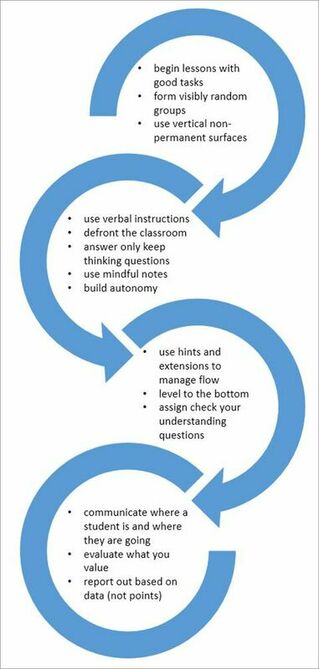
Next Stuff
- Ask around your building for a colleague who has attended a Building a Thinking Classroom PD session, or speak to a learning coach who can point the way to tasks you could start with.
- Head to Dr. Liljedahl’s website for a collection of tasks.
- Check out #vnps on Twitter for a large variety of how teachers around the world have creativity brought these work spaces to their math classrooms.
- Find a colleague in your building who is trying this work already and observe their students for a class or two. Sit down for a chat to learn from their experience before you begin.
Last Thoughts
Do you want to see learners practicing perseverance through math tasks? Do you want to see them productively wrestle through problems that take them beyond number plucking? Learners discussing and sharing their thinking for more than a few minutes around one math question? Learners cheering when they’ve come to a solution together? Learners celebrating and appreciating the various strategies their fellow learners have explored? Learners displaying critical thinking and creativity while reflecting on what it means to be a good citizen and have good character in math class? The Building a Thinking Classroom philosophy is an instrumental piece towards moving a mathematical community of young learners in this direction.
